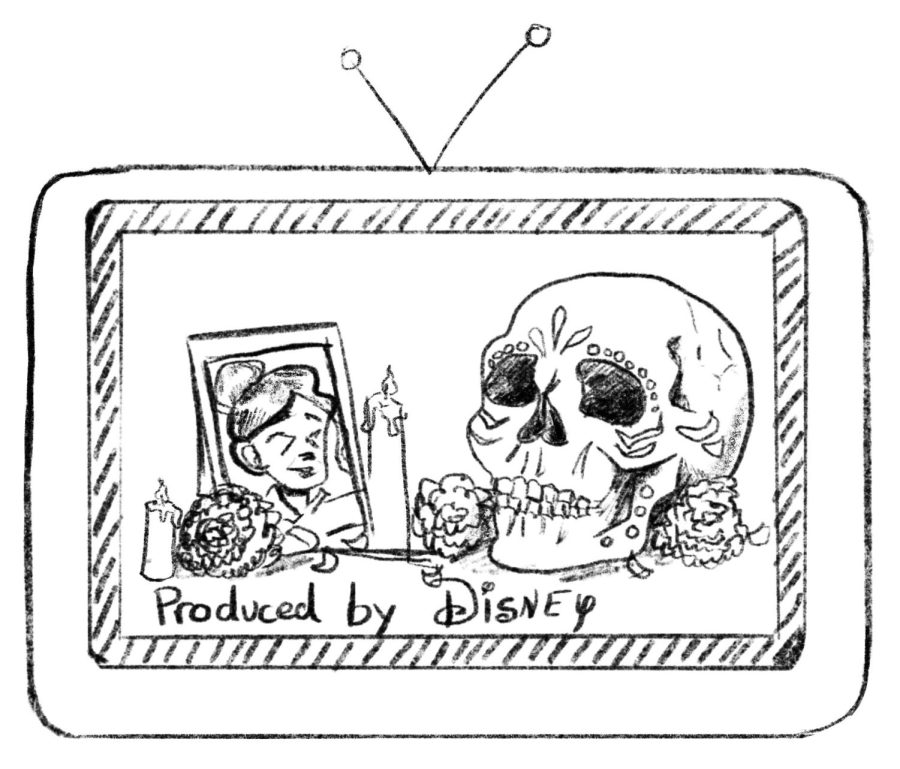Día de los Muertos and Its Journey Toward Representation
December 8, 2022
Day of the Dead is finding itself under a brighter spotlight every year with an increase in representation on American screens across the nation. But has the holiday managed to do so while educating and transcending cultural ignorance? This ultimately comes down to an understanding of the Mexican holiday’s history and its accurate portrayal. While few films in the American entertainment industry have managed to capture the multifaceted culture of the celebration, Coco did a great job at introducing the holiday, especially for younger audiences.
If you were to ask the internet “What Day of the Dead movie should I watch to celebrate?” you’d get Coco highest on your search engine’s list. Coco’s Latine cast and crew’s influence on the film is blatant in the best way possible. Ideally, viewers would show support for a holiday by consuming content made by people who celebrate it.
Coco is a touching story of mourning death while honoring the passed in their wake through a celebration of their life. The song “Remember Me” pays homage to the essence of the Day of the Dead, alluding to the traditional ofrenda or alter Mexican families put together for those they’re honoring as a way to remember them, and keep them alive.
In the movie, a boy finds himself in the afterlife on the Day of the Dead and sets out to keep the memory of his family member alive to stop him from being forgotten. He has to find his way back home before vanishing into the land of the forgotten forever.
While many fail to understand this, Dia de Los Muertos is not a Mexican Halloween. Its rich background goes back 3,000 years to pre-Columbian Mesoamerica. Nahua people practiced rituals honoring the dead, encouraging the integration of death and life. Death was a step in a cyclical existence as opposed to the final destination of a linear timeline. October 31st marks the opening of the gates between the living and the afterlife, when the spirits of children come through and contact the living, until November 2nd, Day of the Dead, or All Souls Day, when all loved ones can embark on the spiritual journey to and from the living world. November 1st, an often overlooked date of the Mexican holiday, is Dia de Los Santos, All Saints Day. This Spanish holiday was the basis of Dia de Los Muertos before Mexico reclaimed its Nahua significance.
The movie does a fantastic job of incorporating the melancholia of the holiday through touching storytelling and mariachi music. The colors and Mexican textiles in the film are equally satisfying, drawing an extreme likeness to the streets of Mexico during celebrations. However, it’s hard to say whether the movie was digested as an opportunity to develop cultural empathy or just another family-friendly spooky season story. Coco is a first step toward the normalization of holiday inclusivity; the next is giving these filmmakers a platform that doesn’t need to rely on the globalized American entertainment industry to be appreciated.
This article also appears in our November 2022 print edition.









